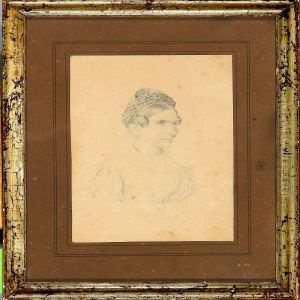Hermann Wilhelm Bissen Paintings
Hermann Wilhelm Bissen was a Danish sculptor, born in Schleswig (then part of Denmark, now in Germany) on October 13, 1798. He was a prominent figure in Danish art, particularly known for his neoclassical sculpture during the 19th century. Bissen's work reflects the transition in Danish sculpture from the neoclassical style to a more naturalistic approach, influenced by Romanticism. His contributions to Danish art are significant, as he played a key role in shaping the aesthetic preferences of his time and mentoring future generations of artists. Bissen studied at the Royal Danish Academy of Fine Arts in Copenhagen, where he was deeply influenced by the neoclassical ideals prevalent in European art during his formative years. His education and talent earned him recognition, and he was awarded several scholarships that allowed him to travel across Europe, further honing his skills and understanding of classical art. These travels, particularly his time in Rome, were instrumental in his development as an artist. Bissen's sculptures often drew upon themes from mythology, history, and nature, showcasing his ability to blend classical inspiration with a keen observation of the natural world. Throughout his career, Bissen was involved in numerous important projects and commissions that cemented his reputation as a leading sculptor of his time. Among his most famous works are the equestrian statues of King Frederik VII in Copenhagen and the monument to the fallen in the First Schleswig War, which showcase his mastery of form and his ability to convey emotion and national pride. Bissen's influence extended beyond his own works; he was a respected teacher at the Royal Danish Academy, where he nurtured the talents of the next generation of Danish sculptors, including his son, Vilhelm Bissen, who also became a renowned sculptor. Hermann Wilhelm Bissen passed away on March 10, 1868, in Copenhagen. His legacy lives on in the numerous sculptures and monuments that adorn Denmark, serving as enduring testaments to his skill, vision, and contribution to the development of Danish sculpture. Bissen's work continues to be celebrated for its technical excellence and emotional depth, occupying a pivotal place in the history of Danish art.
